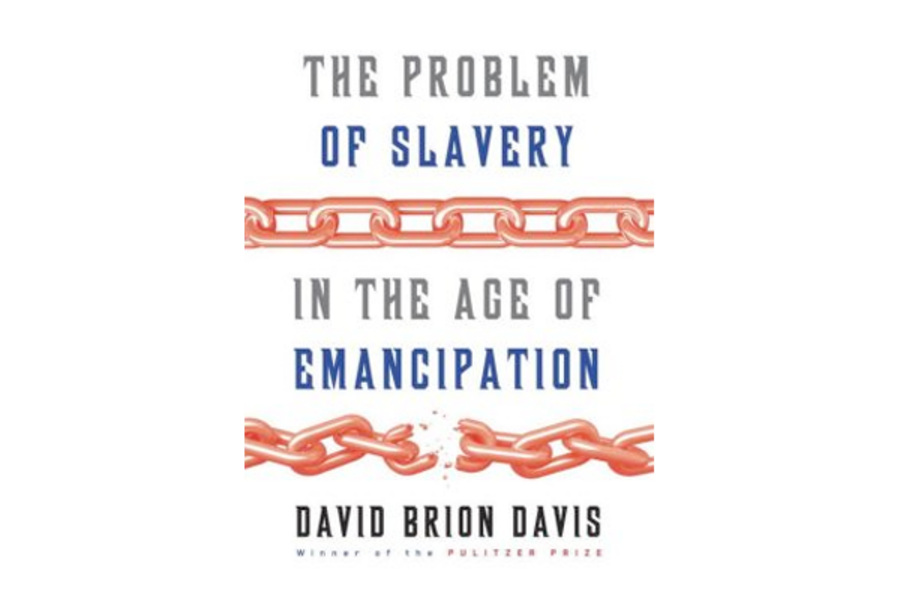The Problem of Slavery in the Age of Emancipation
Loading...
When the Yale historian David Brion Davis began his highly appreciated trilogy on slavery, he focused exclusively on the Western world. But the second volume, "The Problem of Slavery in the Age of Revolution, 1770-1823," looked at a broader swath of the globe. Specifically, the book placed the Haitian Revolution (1791-1804) at the forefront of the era, illustrating the tremendous impact of the revolution there on events in the United States, England, Cuba, the Caribbean, and Brazil, among other places.
Davis’s third installment in the trilogy, The Problem of Slavery in the Age of Emancipation, extends that insight, and adds a host of others. But one of Davis's chapter headings, “Some Meanings on Slavery and Emancipation,” would make a more apt title for this book, which is not a straight narrative but a collection of thoughts on slavery in the New World. Davis is badly in need of a good editor – at times this study seems like a scattershot collection of thoughts.
He begins with the unfamiliar concept of "animalization," which he believes explains how white masters and overseers viewed their slaves. It isn’t convincing. If slave owners really viewed their slaves as animals – rather than human beings helplessly under their control – they wouldn’t have had raped them.
He muddles himself further by saying that whites projected their animalistic behavior onto blacks. “Racism became the systematic way of institutionalizing and justifying the individual white’s project of an ‘animal ID’ upon blacks,” reads the book. The process “involves the projection on victims or on groups such as slaves of an exaggerated version of the so-called animal traits that all humans share and often fear and repress.” This is less history than psychobabble.
What redeems the book is Davis’s immense erudition and deep thinking on the subject. Foremost in quality is the book’s chronicle of the debates surrounding the colonization movement. Underplayed today, Davis recalls that proposals to send African-Americans to Africa – principally to Liberia – were taken very seriously, not least by Abraham Lincoln. They were mostly seen as a feasible method of emancipation, more realistic than turning slaves into free men on home territory. “The specter of Haiti, reinforced by the Virginia slave conspiracies of 1800 and 1802 and the massive Barbadian insurrection of 1816, all of which were influenced by the Haitian Revolution, gave an enormous impetus to the colonization movement,” Davis writes.
Some American blacks jumped on this idea before seeing that conditions in Africa were inhospitable and deciding that America was indeed their home, no matter how unwelcome they were. Davis also takes a hammer to the still widespread view that the Civil War could have been avoided by having the federal government purchase slaves and liberate them. (Then-Republican Congressman Ron Paul made comments to that effect in late 2011.) The Haitian Revolution inspired black leaders such as Frederick Douglass, but it also struck terror into the hearts of slave owners, who were convinced that they, too, would be massacred should their slaves ever break free from their chains.
Moreover, the amazing abolition of slavery by the British Empire was not seen as an unalloyed success in that era. As the historian Eric Foner recently argued in The Nation magazine, Britain spent nearly half of its national budget purchasing the slaves – most of which was paid for by the working class. Low-tax America was not about the replicate that feat, leaving aside the fact that slave owners felt that owning human beings was biblically sanctioned and the foundation of the Southern way of life. “The rise of antiblack and ‘scientific’ racism supported the broad consensus that British slave emancipation had been a disastrous economic failure and that the prospect of further emancipation, as the London Times put it in 1857, was ‘never more distant that now,’” according to Davis.
More provocatively, Davis argues that some blacks internalized the hatred foisted upon them by racist whites. Free men distanced themselves from slaves, and African-American leaders encouraged the community to demonstrate their worth, lest they be seen as bad examples. When black leaders advocated colonization, they were unintentionally and unconsciously encouraging a form of self-hatred, according to Davis. He quotes Toni Morrison’s fictional rendering of a black girl wanting blue eyes, which she described as a “racial self-loathing.”
All of this makes for thought-provoking reading. "12 Years a Slave" seems to have inspired some soul-searching and interest in slavery among the American public. Anyone looking to take knowledge to another level would do well to read Davis’s final installment in his monumental trilogy.
Jordan Michael Smith is a Monitor contributor.






